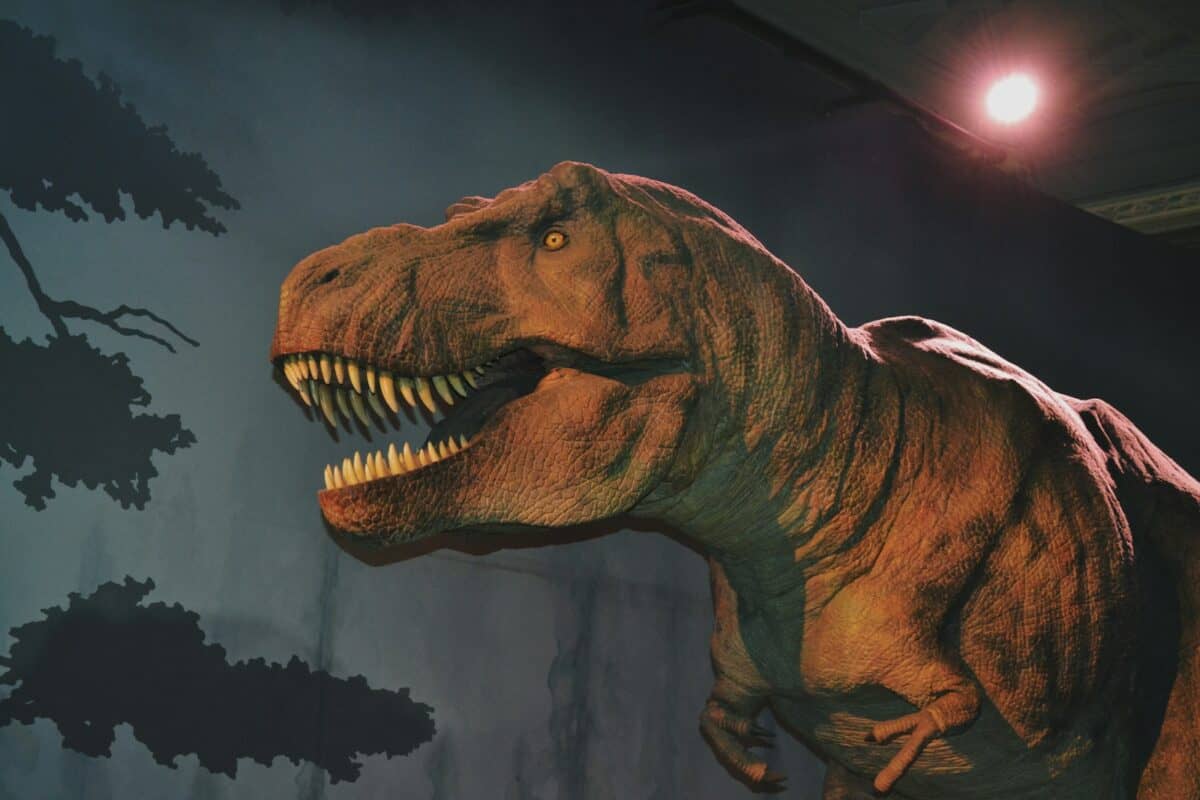The Tyrannosaurus Rex, often abbreviated to T. rex, is one of the most fascinating and iconic dinosaurs known to science. With its massive size, fierce reputation, and frequent appearances in popular culture, T. rex has earned its title as the “King of the Dinosaurs.” This formidable predator roamed the earth approximately 68 to 66 million years ago during the late Cretaceous period. Through scientific research and discoveries, we have gained a profound understanding of this awe-inspiring creature.
Physical Characteristics

The Tyrannosaurus Rex was a colossal theropod dinosaur, with estimates suggesting an average length of about 40 feet (12 meters) and a height of around 12 feet (3.7 meters) at the hips. Weighing between 9 to 15 tons, T. rex was one of the largest land predators to have ever existed. Its massive skull, measuring nearly 5 feet long, housed powerful, serrated teeth designed to crush bone and tear through flesh, making it an apex predator of its time.
One of the most distinctive features of T. rex is its tiny, two-fingered forelimbs, which, despite being short, were powerful in their own right. These forelimbs likely played a role in grasping prey or assisting the creature in other activities. The rest of T. rex’s body was muscled and robust, supported by strong hind legs adapted for bipedal locomotion. Its long, heavy tail provided balance and stability as it moved.
Habitat and Lifestyle

T. rex lived in a variety of environments across what is now North America. Fossil evidence shows they inhabited areas ranging from coastal plains to semi-arid regions, suggesting a versatile adaptation to different climates. As a carnivorous dinosaur, T. rex is thought to have been both a predator and a scavenger, feeding on large herbivorous dinosaurs like Triceratops and Edmontosaurus, as well as possibly consuming carrion.
The debate about T. rex’s hunting strategies has intrigued scientists for years. While some believe it was an active hunter, using its speed and strength to catch prey, others argue that its massive size and energy requirements would have made scavenging a more viable option for survival.
Sensory Abilities and Behavior

Recent studies on T. rex’s sensory capabilities reveal it was well-equipped to be a top predator. The large olfactory bulbs in its brain suggest an acute sense of smell, enabling it to detect prey from long distances. Its keen vision, potentially comparable to that of modern-day eagles, would have made it a formidable hunter or scavenger in its ecosystem.
While our knowledge of T. rex behavior remains speculative, it is likely that this dinosaur was solitary, though some evidence hints at pack behavior, especially in juveniles. There have been fossil discoveries of potential nesting sites and juvenile groupings, indicating that juvenile T. rexes might have stuck together for enhanced survival.
Fossil Discoveries and Scientific Studies

The first T. rex fossil was discovered in 1902 by the famous paleontologist Barnum Brown in Montana, USA. Since then, numerous skeletons have been unearthed, providing extensive insight into its anatomy and lifestyle. One of the most complete specimens, named “Sue,” is housed at the Field Museum of Natural History in Chicago and has been invaluable to scientific research.
Advanced technologies, such as CT scans and biomechanical modeling, have revolutionized our understanding of T. rex physiology and behavior. These studies have explored aspects like its speed, estimated at around 12 miles per hour, and bite force, which was one of the strongest known among terrestrial animals.
The Legacy of the Tyrannosaurus Rex

The Tyrannosaurus Rex continues to captivate both the scientific community and the public. Its imposing presence in museums and continued portrayal in media, such as movies and documentaries, keeps its legacy alive. As new discoveries and technologies emerge, our understanding of T. rex will continue to evolve, further unraveling the mysteries of this legendary dinosaur.
In summary, T. rex represents one of the most studied and celebrated dinosaurs, symbolizing both the scientific journey through paleontology and the enduring fascination with the prehistoric world. As we continue to unearth new fossils and deploy innovative research techniques, we can only imagine what more we might uncover about the true “King of the Dinosaurs.”
- 10 Most Endangered Birds in the U.S. and Where to Find Them - August 9, 2025
- 15 Tips for Managing Spider Infestations During Storm Season - August 8, 2025
- How Superstorms Have Reshaped Coastlines Over Time - August 8, 2025

